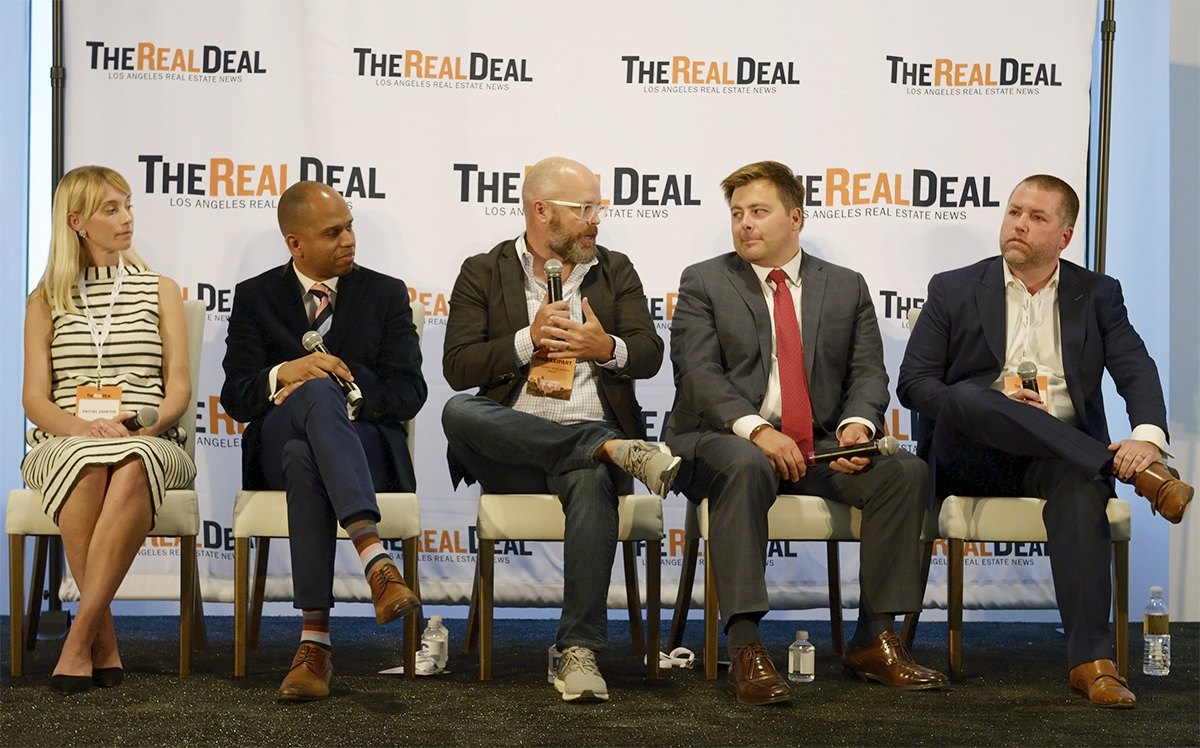Trending
DTLA leaders talk future of city’s urban hub at TRD forum
Office tenants demand a different kind of environment; retail balance is key

Massive mixed-use projects like Metropolis and Angels Landing are helping to transform Downtown Los Angeles, but the neighborhood is still “adolescent at best. It’s not even driving yet,” according to one prominent new development broker.
At The Real Deal’s DTLA Spotlight Showcase and Forum on Wednesday, a panel of top real estate developers and brokers helping to transform Downtown say the area has experienced dramatic change in the last decade but is still in the early stages, suffering from a lack of vital services, including schools. Still, the area’s infusion of restaurants and apartments has drawn people in.
“At this point, Downtown is a destination of choice — it’s not a backup plan, it’s not a result of being priced out of another neighborhood,” said Polaris Pacific’s Mike Akerley. “We’re no longer selling the dream of Downtown to buyers.”
Potential office tenants see it, too, said Rachael Zanetos, Brookfield Property Partners’ director of leasing. Tenants, she said, are increasingly interested in a location’s proximity to amenities that their employees want.
“When we tour large tenants through office space, it’s not about ‘Ok, what are our office expenses?” Zanetos said. “It’s, ‘what’s downstairs, how close am I to residential, how close am I to retail amenities?’”
Creating that vibrancy is a matter of tenant choice, but developers often have to weigh the “hipness” of a tenant with their viability, said Rising Realty’s Matthew Ahrens, who talked about leasing at PacMutual’s 460,000-square-foot office campus.
“You want credit, you want high rate, and you want something hip,” Ahrens said. “You’ll never get all three so you have to give on two. At PacMutual, we gave on rate and later we gave on credit because we wanted a specific concept for the specific space.”
TRD’s editorial director Hiten Samtani, who moderated the panel, asked if developers must have some “index for coolness versus credit,” to weigh those.
“They’re called interns,” Ahrens said.

From left: Mike Leipart, Rachael Zanetos, Ricardo Pagan, Matthew Aherns, Mike Akerly and Hiten Samtani
Downtown is still a work in progress, the panelists said. Most of the condominiums and apartments in the pipeline are priced on the high end. So the question remains, are there enough buyers and renters in the market?
Mike Leipart, who leads new development at the Agency, said a divide “between what is being built and who is here” still remains.
That might make it hard to attract the young, less affluent renter who help creates the energy that Downtown needs to attract higher-end buyers, said Leipart, who leads the firm’s new development sales.
Leipart’s firm is the second brokerage on Greenland USA’s billion-dollar Metropolis mixed-use project, which has experienced some delays. When asked about what was going on at that project, he defended Greenland, saying residential developments of that scale take years to evolve and sell out.
Despite Downtown’s residential development boom, it likely won’t help L.A.’s severe affordable housing shortage. Land and construction prices are so high that luxury is the “only thing that pencils,” Leipart said. “We’re not solving any housing crisis down here.”
But Downtown will keep expanding, panelists said.
Ricardo Pagan, founder of Claridge Properties, is one of the developers betting big. The company, in a joint venture with Peebles Corp. and MacFarlane Partners, is developing the $1.2 billion, 1.26 million-square-feet Angels Landing mixed-use project in DTLA. It will include a charter school, something that Pagan said no other developer has done Downtown.
“I can’t cut it in two different ways, it is a luxurious project. I can’t shape this into something that it’s not. But the luxurious project is also bringing a group of things to the community [including] a school and affordable housing.” Units will start at two bedrooms and a minimum of 1,700 square feet.
Developers also have more of a need to do transformative projects in DTLA than in other, more established parts of the city, Leipart said.
“The fact that all developers are sharpening their knives like that and coming up with new things, that’s why Downtown is here to stay.”




